Barcelona
Top-Rated Tourist Attractions in Barcelona
Catalonia's vibrant capital, Barcelona is a stunning seaside city that flaunts her beauty and sunny lifestyle. Gorgeous scenery, breathtaking architecture, and superb cultural attractions make for an alluring destination. Of course, the balmy Mediterranean climate adds to the charm. Barcelona has an atmospheric medieval quarter, the Barri Gòtic, with an almost magical old-world ambience, but it's even more famous for its Modernist architecture. Antoni Gaudí left a lasting mark on Barcelona with his avant-garde Surrealist buildings; several are UNESCO listed.
After all the sightseeing, tourists will want to simply relax and soak up the city's joyous vibe. Stroll down La Rambla, where the locals hang out. Escape to the sandy beaches near the harbor, and linger over leisurely meals on outdoor terraces. Wander aimlessly and find hidden town squares, where street musicians strum melodies on Spanish guitars. Delightful surprises abound at every turn. Discover the best places to visit with our list of the top attractions in Barcelona.
1. Basilica de la Sagrada Familia
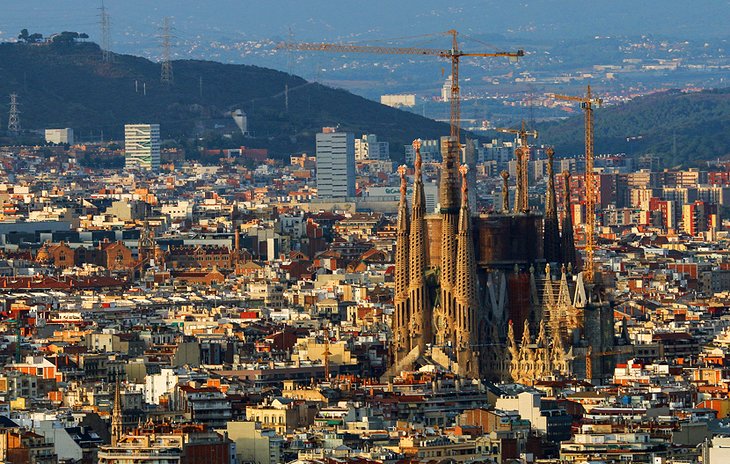
Basilica de la Sagrada Familia
One of Europe's most unconventional churches, this spectacular basilica is the most famous sight in Barcelona. The UNESCO-listed Basilica de la Sagrada Familia stands in the northern part of the city, dominating its surroundings with its 18 spindly towers soaring high above all other monuments. The Basilica of the Sacred Family is also known in Spanish by its official name: Temple Expiatori de la Sagrada Família.
Antoni Gaudí was commissioned in 1883 to design this basilica as a neo-Gothic church. But instead of following the plans, he created a signature example of his famous surrealistic Art Nouveau architecture. He had no firm ideas in mind, preferring to alter and add to the plans as work progressed. Although Gaudí had originally forecast between ten and fifteen years, the church was never completed. As a result, the main work by the most important Catalan architect of modern times remains just a shell, and nobody knows whether or when it will ever be completed.
Visitors are first struck by the lavish exterior with its expressive Nativity facade depicting the birth of Jesus, and the evocative Passion facade that illustrates the suffering, death, and resurrection of Jesus. Equally stunning, the interior is an immense space of 90 meters long by 60 meters high. The ceiling sparkles with opulent decorative details, and colorful stained-glass windows allow ethereal light to flow in.
The apse features an unusual Crucifix rendered as a canopy with lanterns. The overall effect is jaw-dropping. Gaudí best captured the essence of his architectural masterpiece when he described it as "a work that is in the hands of God and the will of the people."
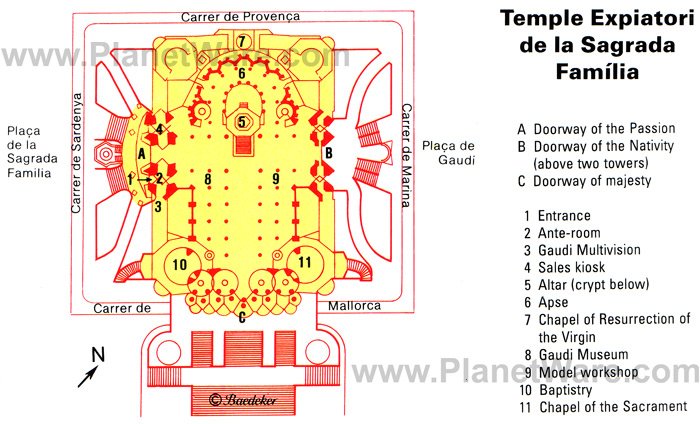
Temple Expiatori de la Sagrada Família Map
2. Barri Gòtic (Gothic Quarter)
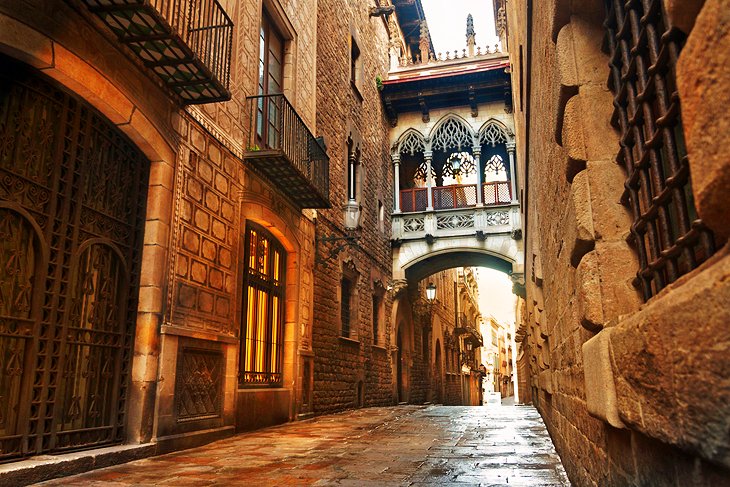
Barri Gòtic (Gothic Quarter)
For 2,000 years, the Gothic Quarter has been the spiritual and secular center of the city. Relics of ancient Roman buildings are still found here, but the Middle Ages are best represented by the historic monuments packed into this quarter. A masterpiece of Gothic architecture, the medieval cathedral stands on Monte Tabor, the highest point in the town center. The Gothic Quarter is where Christopher Columbus was received by the Catholic Monarchs after his first voyage to the New World, and since the 14th and 15th centuries, the city administrations have had their seat here.
Wander through this delightful maze of narrow cobblestone streets and atmospheric alleyways to discover this magical traffic-free medieval world. Discover picturesque quiet squares, enlivened by the sounds of people chatting and laughing or the strumming of Spanish classical guitar. Children often play a pickup game of soccer in the Gothic Quarter's hidden corners, and little cafés with sidewalk terraces are found in its courtyards. Along with its inviting little boutiques and restaurants, look in the Gothic Quarter for the Picasso Museum and the Plaça del Rei, a square where outdoor concerts are sometimes held.
- 3. Casa Mila (La Pedrera)
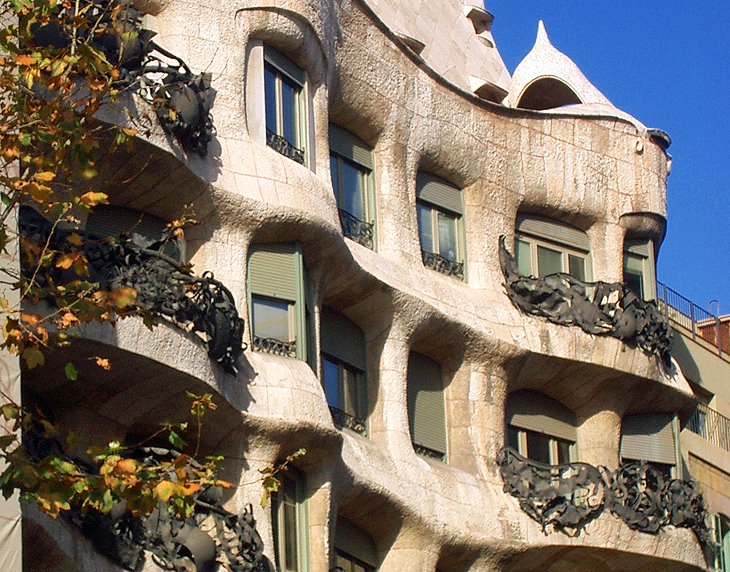
Casa Mila (La Pedrera)
In the Eixample district off the elegant boulevard of Passeig de Gràcia, the UNESCO-listed Casa Milà is Antoni Gaudí's most famous secular building. Casa Mila is also affectionately known as "La Pedrera," which translates to "The Stone Quarry" because the building resembles an open quarry. Built between 1906 and 1912, this flamboyant avant-garde dwelling looks more like a sculpture than a functional building. Every line of the natural stone facade is curved, with rounded windows and metal balcony railings twining around in plant-like shapes. Even the roof has an undulating shape complemented by the decorative chimneys.
The entrance to the building is on the Carrer de Provença, through a remarkable wrought-iron gate that leads to an inner courtyard. The building is supported by ribbed arches that were designed for load-bearing purposes, a feature that reveals Gaudí's genius as a structural engineer. Visitors may walk around the roof terrace for an up-close look at the strangely shaped mosaic-adorned chimneys. The roof area also rewards visitors with sensational views across the city, with the outlook extending to the Basilica de Sagrada Família in the distance.
Casa Mila houses the Fundació Catalunya cultural center that organizes events throughout the year. The monument is open to the public daily for visits, and audio guides are available. A welcome stop for tourists, the Cafè La Pedrera offers a relaxing place for a snack in a setting worthy of the venue.
4. La Rambla: Barcelona's Social Hub
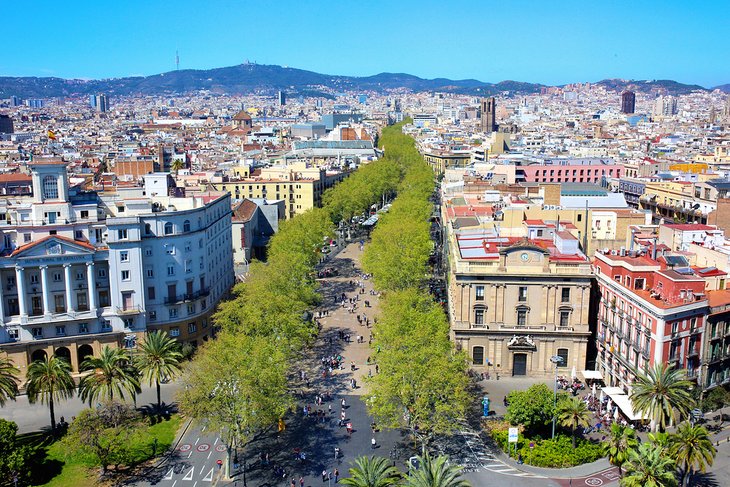
La Rambla: Barcelona's Social Hub | Ronny Siegel / photo modified
The heart of Barcelona's social life is found on La Rambla, a broad, tree-shaded avenue that divides the Old Town into two parts. La Rambla stretches from the Plaça de Catalunya, where the beautiful Romanesque 12th-century Convent of Santa Anna stands, all the way down to the port. This wide street, featuring expansive pedestrian sidewalks, is lined with shops, restaurants, and outdoor cafés, making it one of the most popular hangouts in the city.
During the day, many locals are found here doing their everyday shopping at the Mercat de la Boqueria and at night, groups of friends and families take their evening paseo (stroll) on La Rambla to enjoy the fresh air and lively ambience Depending on the day, onlookers might be treated to live music, a mime show, or other impromptu street performances.
On its northeast side, La Rambla borders the Barri Gòtic, and halfway down the avenue is the Plaça Reial, a lovely palm-fringed square enclosed by historic houses. These elegant buildings have arcades filled with shops, cafés, and restaurants. At the center is the Fountain of the Three Graces with a candelabra designed by Antoni Gaudí.
Another important monument on La Rambla (number 3-5) is the Palau Güell, an ostentatious mansion designed in 1886 by Antoni Gaudí. The owner, Eusebi Güell, was a great patron of the arts, and the building was constructed with a large domed hall intended for poetry readings and private concerts. The entire building reflects Güell's enormous wealth, with sumptuous décor, valuable textiles, and handcrafted furniture created by Gaudí.
5. Palau de la Música Catalana (Palace of Catalan Music)
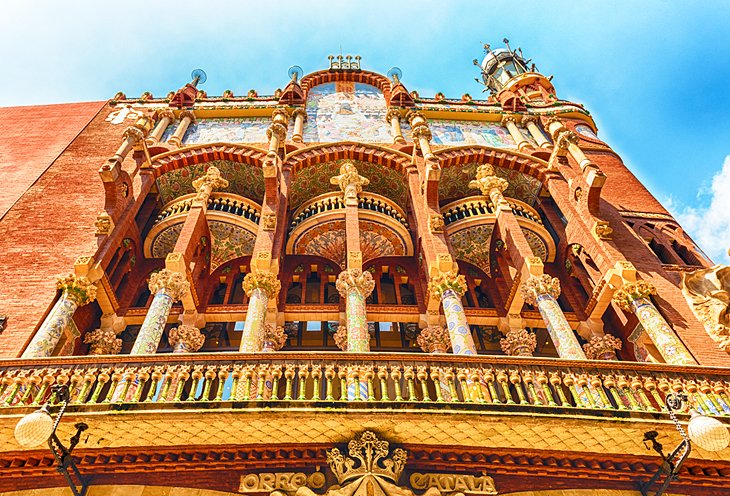
Built between 1905 and 1908 as a concert hall for the choral society Orfeó Català, The Palau de la Música Catalana was designed by the architect Lluís Domènech i Montaner, in the Catalan Modernista style. But although the building is characterized by the style's curving lines and colorful palette, unlike Gaudi's works, this design puts function ahead of form. Although the interior décor is just as colorful and fanciful as the outside, its shape and decoration are dedicated to choral and other musical performances.
The concert hall of the Palau, which seats about 2,200 people, is the only auditorium in Europe illuminated during daylight hours entirely by natural light. The walls on two sides consist primarily of stained-glass panes set in magnificent arches, and overhead is an enormous skylight of stained glass designed by Antoni Rigalt whose centerpiece is an inverted dome in shades of gold surrounded by blue that suggests the sun and the sky. Elaborate sculptures frame the concert stage.
6. Parc Güell: Gaudí's Surrealist Park
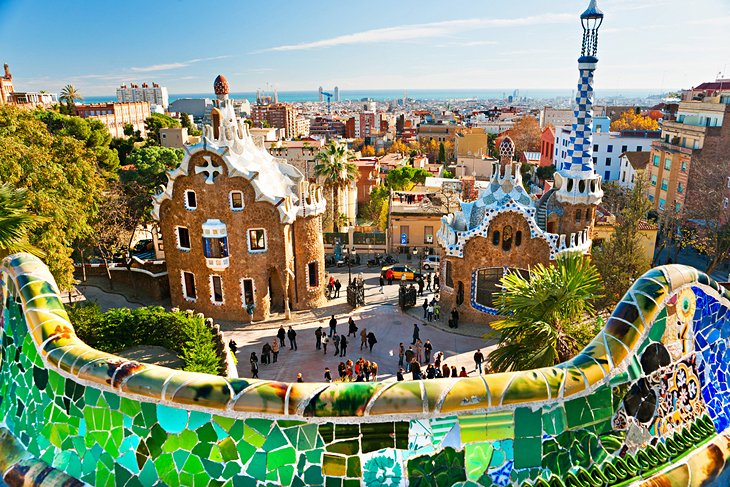
Parc Güell: Gaudí's Surrealist Park
Colorful, cheerful, and full of whimsy, this splendid surrealistic park is another UNESCO World Heritage Site designed by Antoni Gaudí. Created between 1900 and 1914, the Park Güell is beautifully landscaped and features architectural elements in Gaudí's signature style. Viaducts, grottoes, a colonnaded hall, winding staircases, and semi-closed conversation seats are scattered throughout the space. These creative structures are decorated in multicolored ceramic fragments. A spectacular terrace offers panoramic views of the city and the sea. Gaudí himself loved this area of the city, and his home was located here.
Surrounded by a pleasant garden, the Casa Museu Gaudí occupies the house where Gaudi lived; the collection displays works of art, mostly decorative objects and furniture, designed by Gaudí.
7. Casa Batlló
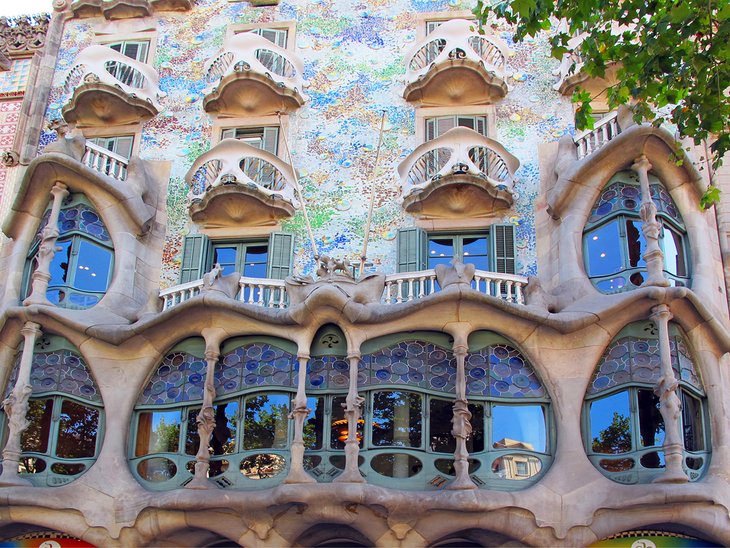
Casa Batlló | Shaun Dunmall / photo modified
Yet another amazing Gaudí creation, the UNESCO-listed Casa Batlló is one of the most characteristic Modernist buildings in Barcelona. The fantastical mansion was designed as a private residence for the textile manufacturer Josep Batlló i Casanovas. With its freely swinging shapes and ornamental facade, this dreamlike building looks like a castle from a surreal fairy tale.
Most of the design details depart completely from any architectural precedent. The window frame on the first floor is bordered by swinging shapes that suggest plants, others resemble entrances to caves. On the facade, decorative glazed ceramic tiles in green, blue, and ochre colors add to the flamboyance. The wave-shaped roof, like that of Casa Milà, has numerous richly adorned chimneys. Gaudí also created the interior decorations, which can be seen in the Casa Museu Gaudí in the Güell Park. For those seeking a superb gourmet meal, the elegant Moments Restaurant, with two Michelin stars, is just a few steps away at 38 Passeig de Gràcia.
8. The Magic Fountain
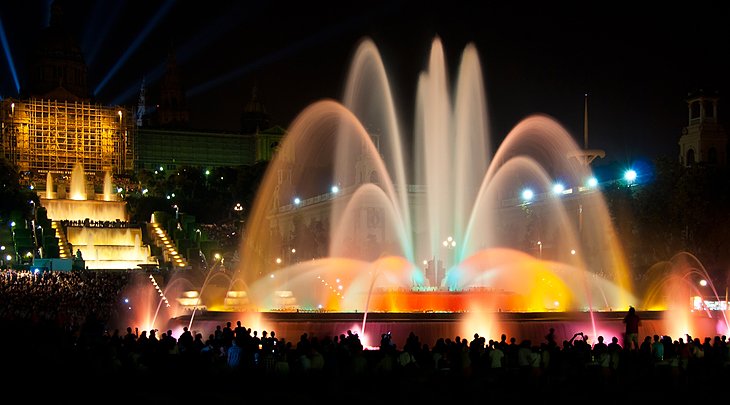
One of the favorite things to do in Barcelona at night is to watch the Magic Fountain of Montjuïc, at the beginning of Avinguda Maria Cristina in the Montjuïc neighborhood. The large Art Deco fountain, erected in 1929, delights all ages with its light and water shows choreographed to music. It was designed by Carles Buigas for the 1929 International Exhibition, which took place in Montjuïc. The show lasts for about an hour.
9. Scenic Views and Art Museums in Montjuïc
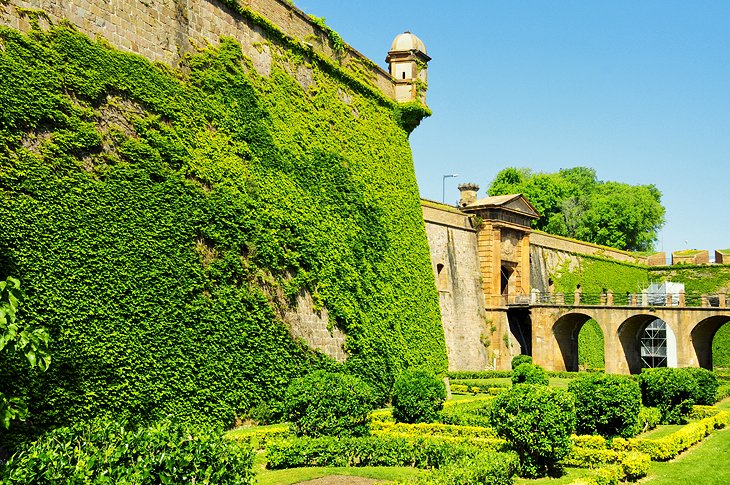
Amusement Park and Scenic Views in Montjuïc
This hilltop neighborhood is on the site of an old Jewish cemetery, explaining its name, "Mont Juïc," which translates to "Mountain of the Jews." Standing 213 meters above the sea, the hillside is crowned by a fortress on its summit and slopes steeply down to the Mediterranean. This scenic area of the city is known for its beautiful natural park with great views and superb museums. The National Art Museum of Catalonia has an exceptional collection of Catalan art from the 10th to the 20th centuries, including sculpture, paintings, drawings, engravings, and photography.
The Poble Espanyol (Spanish Village) is another popular place to visit. This charming fabricated village was created for the 1929 World Exhibition. Montjuïc was a venue for the 1992 Summer Olympics, and tourists can visit the stadium where Olympic competitions were held.
10. La Barceloneta
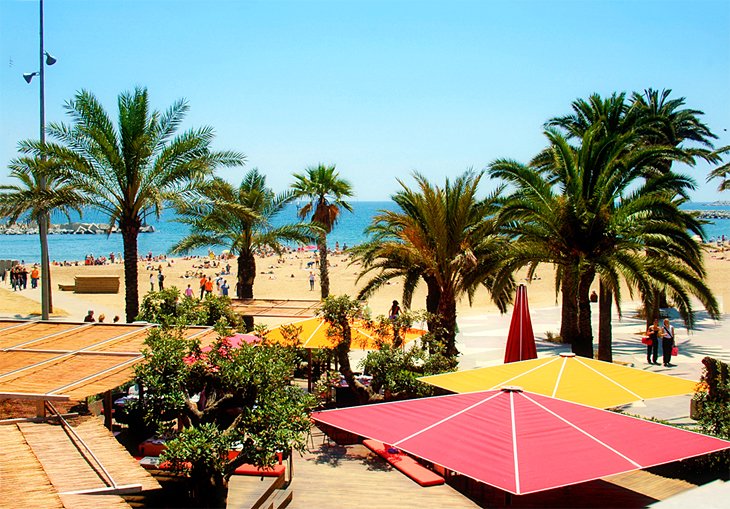
Adjacent to the cruise port, the neighborhood of La Barceloneta borders the long, wide Sant Sebastià Beach, where locals go to sunbathe, surf, and socialize in the many seafood restaurants and tapas venues that overlook the sea. A long promenade lined with palm trees connects the beach area to marinas filled with yachts. You get a good view of the marinas and port area from the Port Cable Car, which ascends from here to hilltop Montjuïc.
11. Monestir de Pedralbes
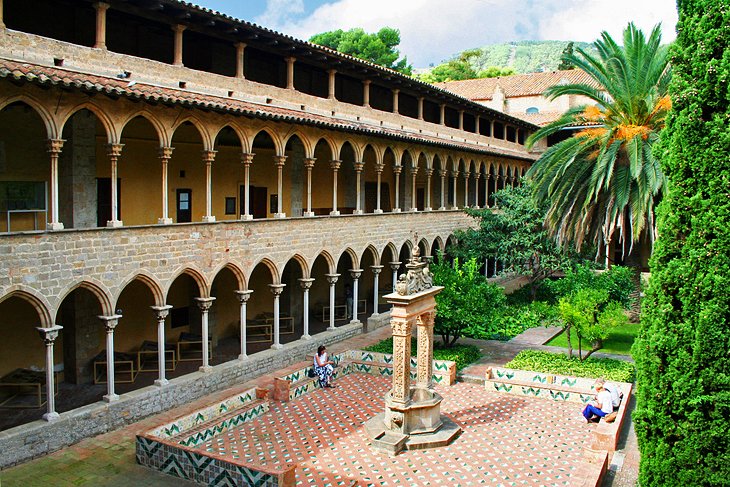
Monestir de Pedralbes
A wonderful example of Catalan Gothic architecture, the Monestir de Pedralbes convent lies in a picturesque little park called the Jardines Reina Elisenda. This idyllic garden is filled with native shrubs, palms, cypresses, and shady trees. Queen Elisenda de Montcada founded the convent in 1326 for the Order of Saint Clare. The complex features a magnificent Gothic church, a serene three-story cloister, and peaceful convent buildings. Visitors enjoy relaxing in the tranquil setting and learning about the life and work of 14th-century nuns. Another highlight of a visit is the Monastery Museum, which displays an outstanding collection of medieval art from the 14th century as well as later religious art created through the 20th century.
12. Quadrat d'Or
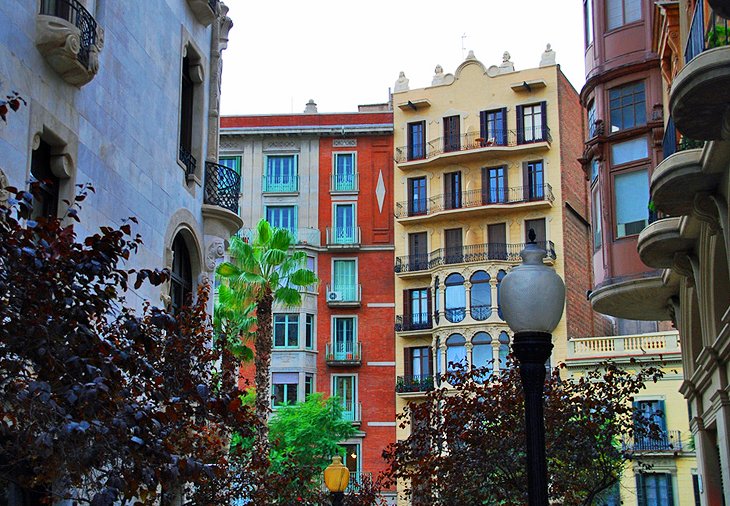
Quadrat d'Or | Markus / photo modified
The Quadrat d'Or (Quadrant of Gold) is an area of the Eixample district renowned for its Modernist architecture. This area is bordered by the Plaça de Catalunya, the Avinguda de la Diagonal, the Passeig de Sant Joan, and Carrer de Muntaner. In this area, the exceptional avant-garde buildings were inspired by the work of Antoni Gaudí and constructed in the late 19th and early 20th century. The main road through it is the Passeig de Gràcia. Different architects made their mark on the neighborhood, and the result is a diversity of the Modernist style. A veritable open-air museum, the Quadrat d'Or offers delightful surprises every step of the way. Visitors discover interesting details of ceramic art, stained-glass windows, wrought ironwork, decorative reliefs, mosaic, and statues.
Comments
Post a Comment